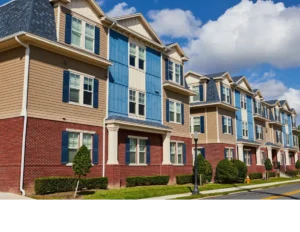The addition of pet spaces, such as dog parks and pet-wash stations, can make an impact at pet-friendly communities.

Back to Basics: What Today’s Residents Want
As apartment owners and operators clamor to offer more attractive communities than their competitors, it can seem like a creativity contest at times.
The temptation to incorporate previously unseen amenities and in-home features certainly exists. While that approach might evoke an initial reaction, however, it doesn’t necessarily have the desired long-term impact.
Amenities such as theater rooms might appear sophisticated, but in actuality, residents might use them once, then check off the experience from their to-do list. When a property is performing upgrades, the same space almost certainly would be better allocated toward attractions that would be used more frequently, such as coworking spaces or other features that cater to the work-from-home resident.
While maybe not as eye-popping as a novelty-type amenity such as an onsite arcade, items such as coworking spaces are more functional and ultimately are more likely to drive resident retention. That is part of the big-picture premise that in the current multifamily marketplace, operators should concentrate on basics and functionality when contemplating any renovations or capital improvements.
This is particularly paramount at a time when, because of the expense involved, owners and operators must be highly strategic with any upgrade measures, making certain that they’ll move the needle in a positive direction.
With that in mind, here is a look at the four upgrade measures most likely to pencil out from a value-proposition perspective:
No. 1 – Clean outdoor spaces
While it might sound ultra-basic, a clean outdoor environment is among the most compelling attractions for residents.
When considering upgrades, properties can boost their appeal by implementing functional outdoor community spaces, such as barbecue areas, grills and fire pits, well-manicured courtyards and added features to the pool area.
The addition of pet spaces, such as dog parks and pet-wash stations, can make an impact at pet-friendly communities, although operators should make certain to also incorporate multiple pet-waste stations to ensure resident cooperation with maintaining a clean community.
Need a Lease Agreement?
Access 150+ state-specific legal landlord forms, including a lease.
No. 2 – Upgraded security features
Above all, residents want to feel safe at a property.
If they do not believe that they are, they will be vocal about it and the community could get skewered in online reviews.
Enhancing security isn’t always a budget-breaker. From an amenity perspective, it could include the installation of cameras in common areas, LED lighting for a bright nighttime environment and damage-resistant gates and fences to further protect the community.
No. 3 – Resources to make things easy
Today’s residents don’t want to jump through hoops to schedule a tour, sign a lease, pay rent or submit a service request.
They desire an easy process, and in an increasingly digital environment, operators should make every effort to provide it.
While capital improvements are generally thought of as common-area additions and upgraded features within the apartment homes, properties can also augment their digital footprint by offering tech-savvy ways to navigate the leasing process. This includes offering options for virtual tours, contactless leasing and innovative resident portals that enable one-click rent payments and quick-hit maintenance requests.
No. 4 – Every community is different
It might seem easy to use a cookie-cutter approach when considering community improvements. What works for one property, though, might not necessarily work for another.
As such, operators should treat each property as its own entity and factor in location, demographic, type of community and any other potential factors that might affect the type of upgrades craved by the resident base.
For instance, prospective residents in a property located in Phoenix may prioritize a high-end resort-style pool, whereas residents in Seattle may prioritize a well-lit and spacious clubhouse with an indoor fitness center. The climates of each region dictate different needs and demands.
Summary
With the multifamily market experiencing price challenges with regards to materials, labor and insurance, the sector is in a cycle in which operators could greatly benefit from returning to fundamentals. Part of that approach includes refraining from high-priced upgrades that might have cosmetic value but are least likely to drive ROI.
By concentrating on the basics and functionality, owners and operators can ensure that their improvement measures are truly providing a return on investment.
Source: Rental Housing Journal













 Accessibility
Accessibility